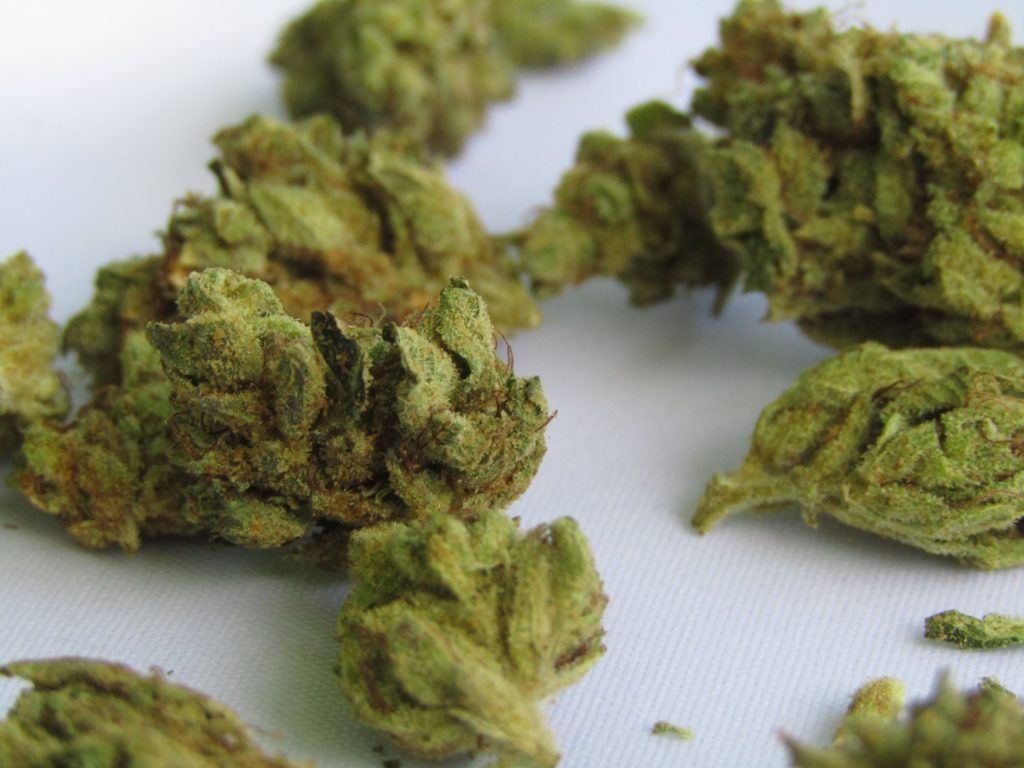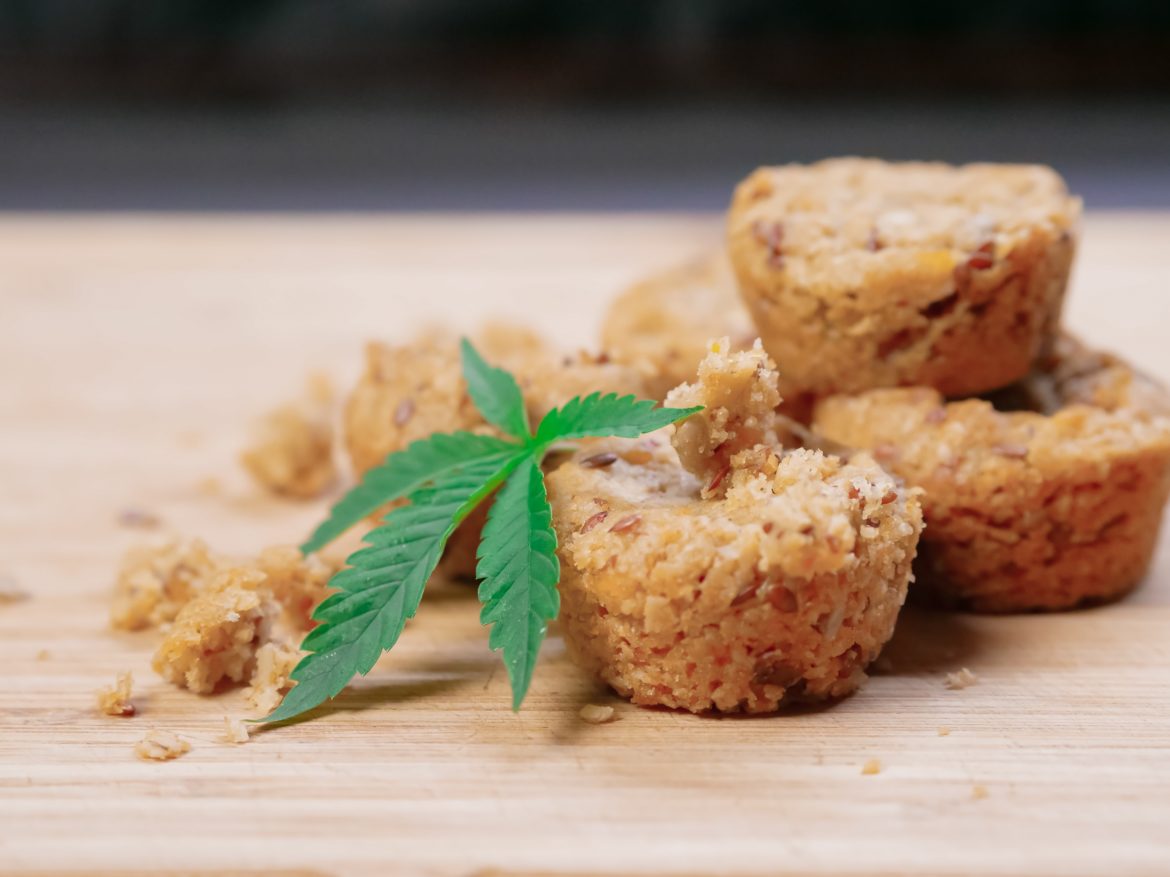Decarboxylated weed sounds like a science experiment that involves a lot of expensive equipment and beakers that nobody really knows the name of. It’s not as complicated as that. Decarboxylated weed is important because it’s the only kind of weed that can be used to make edibles. You could eat a bud of raw weed. You could eat a whole bag of raw weed. Nothing is going to happen. Not everything you see on TV is rooted in reality. That guy in that TV show who ate an entire eighth when he was running from the cops was acting in a comedy part written by someone who has probably never smoked weed. Knowing that it becomes funnier than the writer ever knew it would be.
Decarboxylation is the process that cannabis must first undergo before it has any value to your body when ingested. The process happens automatically when you smoke your weed. You need to perform the process manually before you bake your pot brownies. Otherwise, they won’t do anything but taste funny and cure your sugar craving.
Why eating raw weed doesn’t get you high
Weed gets you high through a chemical reaction that occurs when you ignite it or vape it. That same reaction can’t occur when you eat your weed. When you get your weed, it’s raw. When you torch your weed, you cook it. Your weed needs to be cooked in order to convert its cannabinoids into their useful forms.
This can be confusing if you want to make edibles. Aren’t you technically cooking your weed if you’re making edibles? After all, it’s going to be in the oven for a long time. The answer here is that it isn’t that simple. Baking weed into wet brownie batter just makes it soggy. Your weed needs direct heat to make that conversion.
Cannabinoids in their raw form
Your weed has a THC percentage on the container it came in. That’s not the actual THC percentage of your weed. It’s only 25% when it’s decarboxylated, which is something you do when you roll it into a joint and spark it up.
There is little to no THC, CBD, CBC, or CBG in weed when you buy it. Instead, there’s THCA, CBDA, CBCA, and CBGA. It’s the “a” that makes all the difference.
The main cannabinoid in your weed is CBGA. The plant produces a wealth of CBGA and, as needed, it converts the CBGA into THCA, CBDA, and other “A” cannabinoids. The “a” in this instance refers to acid, and your plant uses these acids to produce specific functions.
Each cannabinoid is attached to a group of carboxylic acids. This makes the cannabinoids much larger. In fact, they’re so large that they can’t fit into your body’s cannabinoid receptors. When you ingest the acid form of cannabinoids, they pass right through. They can’t make that perfect puzzle piece connection responsible for elevating your mood or relaxing your body.
In order to make the connection necessary for improving your mood, that group needs to go away. The easiest way to remove it without damaging the cannabinoids is to gently and deliberately burn the group off. Once it’s gone, the cannabinoids can work with your body.
How does decarboxylation work?
Decarboxylation works by applying dry heat to the exterior surfaces of cannabis. When you’re smoking it, you’re already doing that. Every time you flick your lighter or drag on a joint, you’re decarboxylating your weed as you go. It’s not an additional step you have to take.
When you’re making edibles or weed tea, you can’t light the weed on fire first. It will burn to ashes and the cannabinoids will disappear. The solution is to apply steady, low heat over a prolonged period of time to burn off the carboxylic acids without damaging the weed. The acids will leave long before the cannabinoids will. It’s just a matter of temperature and timing.
There are other factors to consider. When your weed was dried and cured, it lost most of its valuable terpenes. Terpenes are aromatic compounds that give weed its flavor and aroma while potentially contributing to their effects. Terpenes love to evaporate, and the same heat you use to burn away the carboxylic acid group can just as easily take the terpenes with it.
This is why temperature control and patience are so important with decarboxylating. Yes, your weed will decarboxylate faster at a higher temperature. But is it really worth the tradeoff of losing your valuable terpenes?
Keeping the decarboxylation temperature in the low 200 degrees Fahrenheit range can minimize the damage done to cannabinoids and terpenes during the process. You can do this by grinding your cannabis, covering it with aluminum foil, and baking it at 240 degrees for about 45 minutes. All you need is weed and things you already have in your kitchen. It isn’t quite the ordeal it may seem to be.

What do you do with decarboxylated weed?
You can eat decarboxylated weed exactly how it is. It won’t taste good and it won’t be pretty trying to spoon all those grounds into your mouth, but it’s going to work. Most people don’t do that for reasons you can very easily imagine.
You can add it to a bag of your favorite herbal tea to make yourself a tasty and refreshing canna-beverage. You can infuse it into butter, vegan butter alternative, or oil and use it to bake with. You can also melt the butter on top of the brownies you got from a bakery and save yourself some work.
As long as you’re ingesting it, it’s going to work. You don’t necessarily need to use it to whip up something from scratch.
What happens when you eat decarboxylated weed?
When you eat decarboxylated weed, your body uses it differently from the way it uses weed you smoke or vape. It takes a while for your stomach to digest it, and a little while for your liver to process it. Your liver converts the THC into 11-hydroxy-tetrahydrocannabinol, which is a highly bioavailable form of THC. This is why the high from edibles can be intense, and also why it lasts for such a long time.
11-hydroxy-tetrahydrocannabinol works differently from THC you smoke. That’s why it’s important to be mindful of your dosage with edibles. You might smoke a one-gram joint of 28% weed to yourself and feel perfectly fine. 28% is 280 mg of cannabis.
If you were to eat 280 mg of cannabis, there is a 100% chance that you are going to be the person who makes the “I’m dying from pot” 911 call that everyone is going to laugh at. It’s way too much in edible form, for anyone.
Newcomers to edibles find that as little as 2.5 mg produces the effect they want. People with a little more experience might go for a 5 mg edible, and people who are really comfortable will go with a 10 mg edible. The most seasoned users with very high tolerances will sometimes go up to 50 mg. When you go higher than that, you’re treading in dangerous territory.
If you aren’t sure how to dose your decarboxylated cannabis, do the math for your dilution and weigh the weed you’re using to make sure you’re not putting too much in each edible. Start with 2.5 percent and wait 2 hours to see how you feel. Don’t go running back for more because you feel like it isn’t kicking in. It can take your body a while to digest your weed.
Slowly escalating the amount of THC you put in each edible will help you find where your comfortable limit is. Remember that if your edible doesn’t get you as high as you want, you can always smoke some weed. If your edible puts you on a strange planet, you’re going to be stuck there until you come down. It’s best not to take any risks that aren’t well-calculated.
The takeaway
Without decarboxylation, weed is just a vegan snack. It’s not going to give you the good time you’re after. Although it sounds intimidating, it’s extremely easy to decarboxylate your weed at home. If you’re looking to make DIY edibles, all you need is weed and an oven.
If you’re on an edible quest, Emjay can help. We can deliver you weed to decarboxylate.
If you’re feeling a little less ambitious, we can deliver you premade cannabutter or premade edibles. It’s up to you how much effort you feel like putting in.
We’ve got whatever you need, and we’ll be there in half an hour.
